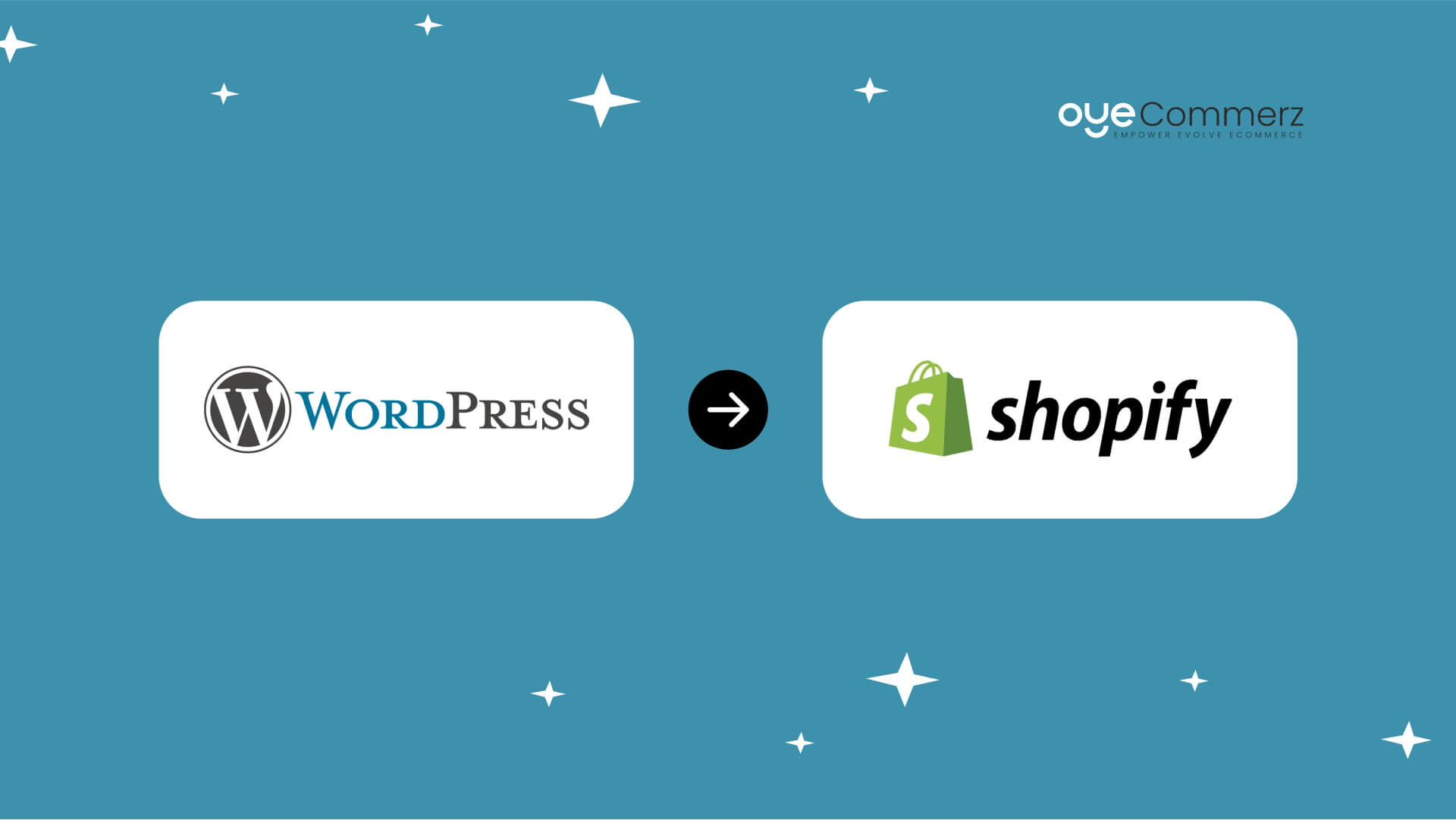Shifting from WordPress to Shopify is an promising step toward streamlining your online store operations. As companies expand, choosing a solution that aligns with scalability, UX, and customization is essential. Shopify has emerged as a preferred choice for e-commerce professionals, offering superior flexibility, data protection, and ease of use. In this guide, we will delve into the transformative impact of this migration, discuss the advantages, and share practical tips to ensure a smooth move.
1. Why Switch from WP to Shopify?
The combination of WordPress and WooCommerce, has served countless e-commerce platforms. However, as businesses scale, challenges like plugin dependency, data risks, and technical complexities often obstruct growth. Shopify, specifically created for digital retail, eliminates these concerns with an all-in-one, user-friendly platform. Real data back this shift—Shopify hosts over 4.4 million stores worldwide, with a reported 10% boost to sales performance for numerous merchants after migration.
2. Shopify's Advantages for Thriving Online Stores
Shopify’s robust ecosystem caters for expanding businesses. Its standout features are:
- Effortless Design Flexibility: Shopify provides over 80 expertly crafted themes.
- Built-in Features: Capabilities such as Shopify Payments and integrated SEO streamline operations.
- International Expansion: Currency versatility and regional customization empower brands to reach global markets.
Additionally, Shopify delivers an availability percentage of 99.98%, ensuring your store remains accessible.
3. Preparing for WordPress to Shopify Migration
Before migrating, evaluate your current store. Review inventory details, customer details, and search engine rankings. Tools like Shopify’s Migration Kit or third-party solutions help ease the transition. Create a comprehensive plan, making sure all assets—item details, media files, and blog content—are ready for seamless import.
4. The Importance of Accurate Data Migration
Data migration forms the foundation for a smooth platform switch. When migrating from WP to Shopify, prioritize:
- Product Information: SKU, item summaries, and categories.
- Client Information: Emails, order history, and custom fields.
- SEO Optimization: Retain meta tags, URLs, and redirects to avoid SEO losses.
Leverage tools such as LitExtension to streamline data transfer while reducing mistakes.
5. Customizing Your Shopify Store
After the move, customizing your Shopify store helps it aligns with your business identity. Utilize Shopify’s intuitive page builder to design pages effortlessly. WooCommerce to Shopify migration Shopify's themes are optimized for all devices, ensuring a seamless user experience across devices—a key point, given 74% of online shopping comes from mobile visitors.
6. Maintaining SEO During Migration
Search engine optimization is crucial for maintaining your online presence during migration. Shopify is highly optimized for search engines with clean URL structures, built-in optimization tools, and smooth content management. Ensure:
- Set up URL forwarding for existing links.
- Optimize new pages with targeted phrases.
- Leverage plugins like Plug in SEO to monitor performance post-migration.
7. Essential Tests After Migrating to Shopify
Once the migration is complete, run detailed checks.
Review: - Page load times (Shopify delivers faster speeds in contrast with WordPress).
- Functionality of payment gateways and transaction flow.
- Adaptability across devices.
Quality assurance guarantees your store provides a seamless shopping journey from day one.
8. Real-Life Success Story
An example of effective platform switching is Gymshark, a fitness apparel brand that moved to Shopify. Post-migration, the company saw a 60% boost in mobile sales and reduced site downtime. This highlights the potential of Shopify in driving e-commerce growth.
9. Overcoming Common Migration Issues
Migration comes with challenges, such as data integrity and adjusting tailored features. However, Shopify’s robust support and external professionals simplify the process. Partnering with qualified Shopify developers helps guarantee a smooth transition.
10. Starting Your Journey with Shopify
Migrating from WordPress to Shopify marks a forward-thinking approach to online retail. By focusing on growth, simplifying management, and enhancing Shopify cart migration the customer experience, Shopify enables companies to thrive in competitive markets.
Final Thoughts
Transitioning from WP to Shopify is a strategic move that can significantly boost your online business performance. With a well-structured strategy, the right tools, and expert support, you can unlock new success milestones.
Ready to make the leap? Let’s discuss how our Shopify migration services can revolutionize your e-commerce platform. Get in touch today, or ask yourself: Is it time to seize Shopify’s advantages for your store?
